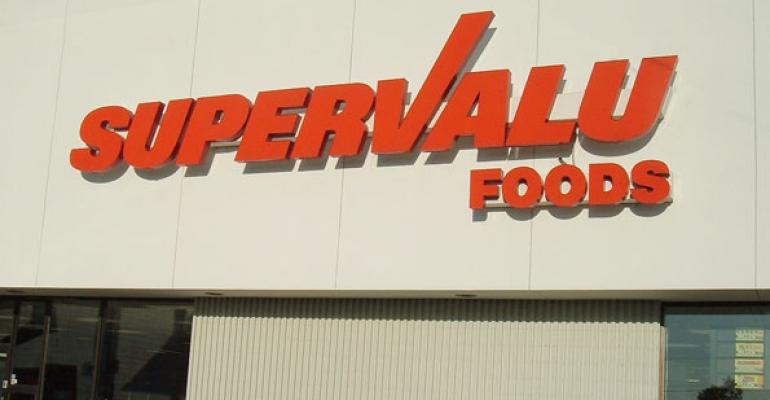Supervalu officials on Wednesday faced down skeptics on the prospect of improving its ailing retail stores division enough to meet projected financial results for the fiscal year.
Speaking at a conference call reviewing the company’s second-quarter earnings released Wednesday morning, CEO Mark Gross and COO Bruce Besanko pointed to encouraging signals within the retail business, despite the units posting an operating loss of $8 million on $1 billion in sales which included identical-store sales declines of 5.9%.
Despite the ongoing retail struggles that have brought companywide EBITDA down by 10% to 11% year-to-date, officials maintained prior projections that EBITDA would be flat for the year.
“We obviously wouldn't have reaffirmed the outlook unless we were confident that that was achievable,” Besanko said, citing improvements at both retail and wholesale divisions.
The market appeared skeptical, as stock in Supervalu was down by more than 8% Wednesday, giving back more than it gained two days before on the announcement of its pending sale of Save-A-Lot.
Besanko reiterated that headwinds of deflation, new competition and reductions in SNAP benefits helped to trigger the sales declines at its retail stores, but highlighted encouraging signals associated with several initiatives — including e-commerce, shrink reduction, associate training and a store segmentation strategy — that were improving fundamentals. He anticipated that operating income in retail would be positive for the second half of the year.
Shrink, Besanko said, has improved by double-digits since earlier in the year and a store segmentation program aligning merchandising and assortments to better match area demographics, have resulted in low-single digit improvements at stores that have gone through the program vs. those that haven’t.
Gross described the retail operations as an important part of Supervalu’s business, both as a means of maximizing its distribution strengths but also as a “lab” to test initiatives to better serve independent customers.
“In many ways, we think about our retail banners as a large wholesale customer which can serve as a testing ground for new ideas that can then be shared with our wholesale customers,” he said. “We know that reversing our current retail operating trends will take time, and we are not planning on taking short-term actions that would hinder our banner's longer-term ability to maintain a compelling offering for our shoppers and neighborhoods.”
In wholesale, Gross said Supervalu did not anticipate any customer defections for the remainder of the year and said he was confident the company could win additional business on the strength of its service-focused business.
Although Supervalu lost a large customer when Albertsons transitioned away last year, the service agreement infrastructure Supervalu developed with the company is “an under-appreciated and under-marketed asset” for Supervalu, and “one that can provide benefits to other retail companies.
“These benefits could include lowering operating costs, as well as more sophisticated information with which to run their business. These impressions are reinforced by my conversation with customers and potential customers who've shown a genuine interest in what we could do for them from a services perspective.”
The Save-A-Lot sale, which was announced earlier this week, will allow Supervalu to pare down debts and better execute on its strategic plan, Gross said.
Save-A-Lot, which is expected to transfer to new owner Onex Corp. early next year, also faced a difficult environment between deflation and reduced SNAP benefits, Save-A-Lot CEO Eric Claus said. Deflation was especially rough on Save-A-Lot as it triggered competitors to chase volume by pricing key items at or below cost. But with a more limited selection than its competitors, Save-A-Lot has found it difficult to make up reductions in mix.
“We, too, have lowered retail prices, but see limited benefit to being even more aggressive given our inability to offset such reductions elsewhere in our assortment,” Claus explained. “I believe our licensees understand our thinking and support our approach.”
Claus said store resets that among other changes are adding “must have” national brands to stores and rolling out new America’s Choice private brand products, should provide a sales lift at completed stores by the end of the year. Around 270 store resets were complete by the end of the second quarter.
“Overall, we are facing strong headwinds today,” Claus said. “But with time, we believe they will subside and our long-term strategies will take stronger hold. When the tide will turn, I believe Save-A-Lot will ride the upside to that wave.”





